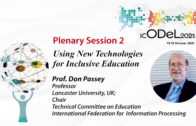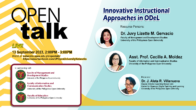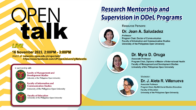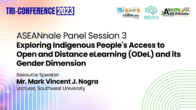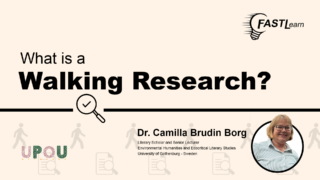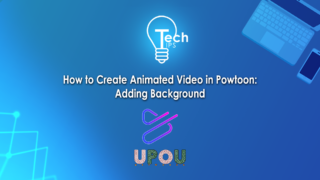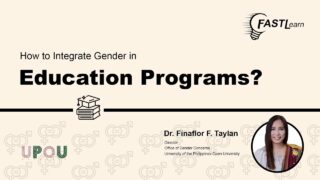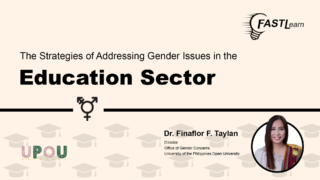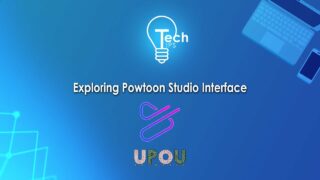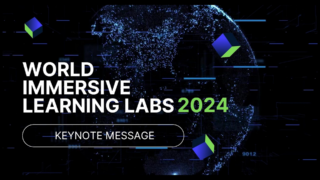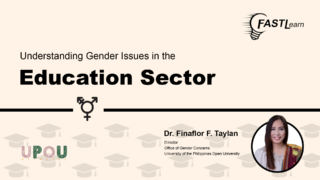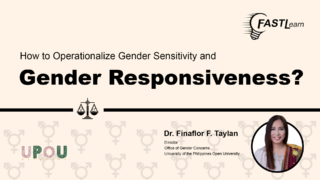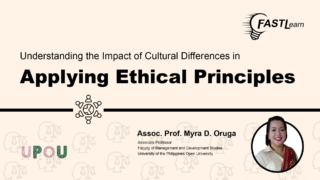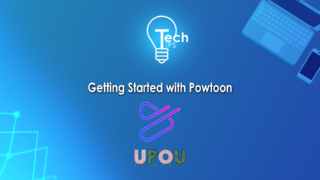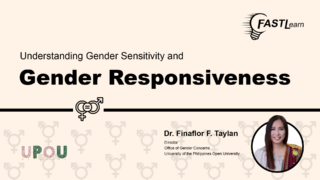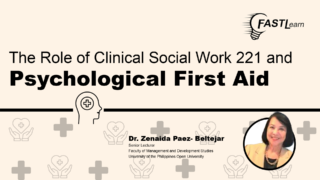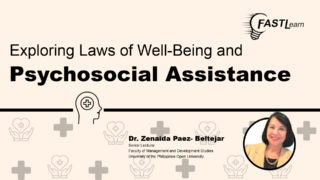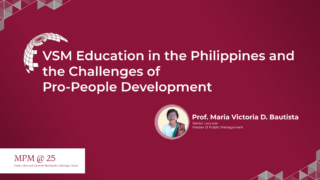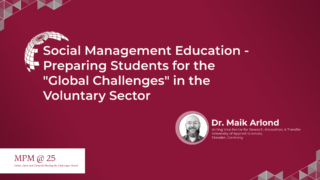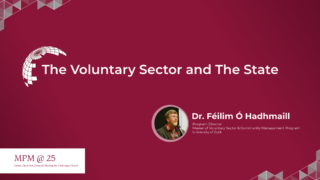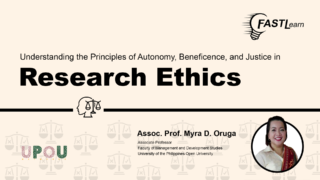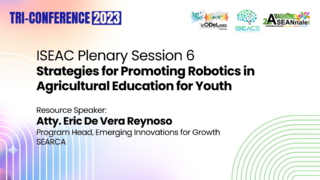Using New Technologies for Inclusive Education
Prof. Don Passey
Hello, my name’s Don Passy. I’m a professor of technology enhanced learning. I work in the Department of Educational Research at Lancaster University in the UK. It’s my privilege to be involved in this conference and my sincere thanks to the organizing and the program committee for this very kind invitation to talk to you and to be involved with you during what is clearly a significant context in the current climate that we’re in.
I’ve been involved in using technologies for a long time, both from a research point of view and from a practice point of view.
And I have been interested in how technologies have evolved and how they’ve developed over time. So I’m really delighted to be able to talk to you about this topic of using new technologies for inclusive education. I think that it’s important perhaps that we remember that new technologies are certainly very important. Particularly from the perspective that new technologies tend to bring and focus on communication, which is so vitally important in terms of being able to undertake open and distance e-learning. We require that form of communication and we’ve moved on beyond the period of time when we were involved in what might be called more distant education, where we were sending out materials to individuals to undertake.
Fortunately, we’re in a much better position now in many, many instances, but not all. I’ve also gained a lot of interest over the years in inclusive education because I do believe that technologies open up opportunities for inclusion of those that would normally be excluded from education and learning in some ways. And I certainly know that from my work with colleagues in the UPOU you have focussed on that area in terms of enabling people to be included within education and learning no matter where they are across the range of of islands that you have within the Philippines. That, of course, is also true for many other countries, too.
So. Excuse me. So I’m going to talk about this whole area of new technologies for inclusive education. But also, I think we should remember the old technologies, too. They still have a place. Information technologies still have a part to play because we can combine them with the use of communication technologies.
So what I’d like to talk about really are three things. One is to talk a bit about the past. What do we have as the potential for technology, enhanced teaching and learning? And then a bit about the present. What has changed, particularly during the covid 19 pandemic and then to think about the future, taking forward lessons for the next phase as I would see it. I think that that’s going to be particularly important and we do have a lot that we can learn from with regard to the past and the present in terms of moving forward, to put a bit of context onto it.
There is a long history of research in the field of technology enhanced learning, in open learning, in distance learning, etc. And it spans certainly across a period of at least four decades. When we look at that evidence in the research, however, it doesn’t come up with a single answer for us. In fact, some of the research that’s been done, particularly in terms of looking at reviews across ranges of literature, suggests that it’s not always clear that you can find a positive impact. And even people that have used more quantitative approaches in terms of looking at meta analysis have often found that the effect size, the overall effect sizes is relatively low. Something like 0.3 is what Tamim and colleagues found from their study in 2011 and subsequent studies. But nevertheless, if we look at earlier studies, what we often find is that we do see statistically significant outcomes in terms of effects. And that I think is interesting.
And one of the things that it points to for me is the fact that at the early stages of uses of technology, we were using very specific technologies. They were information forms of technologies and therefore the use of them could be controlled very easily against experimental situations and control situations. So identifying statistically significant outcomes was to some extent a bit easier, whereas now I think the situation is changed is much more complex. So if we think about the past what we have had and I mean by the past up until one or two years ago, we’d have many, many technologies available. We’re not talking about a single technology. We’re talking about a whole range of different technologies, whether we’re talking about hardware or software. With both of those arenas, we have very wide ranges so we can have smaller mobile devices, we can have larger desktop devices, we can have very large devices which will allow us to analyze vast amounts of data. We have software of different sorts. So the software that I’m using at the moment is a video recording software. But that’s one particular package that happens to be on my system, but I have many, many others that I can choose from. But it means that we now have this vast variety of technologies that we can use to support, and applying them in different contexts is very, very important and the choice of them is very important. But the more we have in a sense, the more difficult that that choice can become, because we have to take different factors into account.
And the other thing that I think we mustn’t forget is that technologies being used in one temporal or regional context won’t necessarily fit within another temporal context or another regional context. So we do have to think about that as well. So what can be used in one area may not be able to be used in another. And I think that that’s also been shown to us during the pandemic, that there are certain technologies that we’ve been able to use in the past that haven’t worked very well during the pandemic where we’ve moved to more online situations.
Also, I think we have to think that a lot of our education is based upon a past model of educational practice where roles of teachers, learners, parents, guardians are established, if you like, that were accepted in certain ways. And that means that the technical and digital skills associated with those particular roles has been sort of established. It’s certainly been accepted in certain ways and so has the technical and digital access. And I think that what we have to perhaps bear in mind is that certainly during the pandemic that has shifted in very many contexts. And I think that it can shift in the future. So thinking about the present, and I’m thinking here about what’s happened during the covid 19 pandemic, there are a number of things that have changed.
Certainly, the teaching medium has changed in in many localities from a face to face to an online medium, that’s for sure. And it means that the mode has changed. It’s moved to either remote or blended or hybrid. I won’t necessarily go into the outcomes of that. I’ll think about that a little bit later, when I’m talking about inclusion to a greater extent. The learning medium is changed. So it’s often changed from a face to face environment to a screen or even to a mobile device. And that, of course, is a different form of medium and the mode has changed. So there is that greater remoteness or isolation in some places, in some contexts with regard to that mode. And the learning environment has changed. It’s no longer necessarily a classroom environment. It’s also been to do with being at home or within a community, within community buildings, within smaller rooms, etc. And the support has changed, of course, because the support that the teachers might have given in a classroom situation has changed and that has had an effect. And that’s meant also that parental and guardian roles have shifted quite a lot.
So what we’ve seen in the present, and I’m talking here pretty much globally, but I will also be here be of course talking about a particular context, is that there have been quite a number of shifts during the immediate past, if you like, during this more present situation. And if we think about the future, I’m thinking here particularly about inclusion. And I think that one of the things to think about with regard to inclusion is how we think about exclusivity factors and how we address those. And I think that we can consider exclusivity through sort of three different perspectives, through the perspective of a learner, the perspective of the institution and the perspective a teacher. So from a learner’s perspective, access to the digital technology resources is clearly important. That’s one of the exclusion factors that can occur and so is their digital technology competence, but also their level of interest to what extent they can be interested in what is going on online and what and how the online generates their wider interest. From an institutional perspective we have different factors. We have the functionality of the technologies that are being used from the institutional perspective and whether there are specific forms of software and hardware that are being used and what the implications are there and whether there’s technical support to address any issues or challenges and linked to that, whether there’s pedagogical support in terms of how to use these technologies within teaching and learning situations.
And then that relates, of course, to the teacher perspective, which is to do with exclusion, that can happen from experience and competence. It can happen because of particular pedagogic applications that are used, how one’s going to use the technologies within a teaching arena. And it’s also to do with interpersonal skills. And then in terms of thinking about the future and inclusion, we’re also thinking here, I think, about engagement. And one of the things about engagement, of course, is features of valuing. How do we offer these features of valuing through an online, through a remote or an open or distance e-learning scenario? How do we cognitively engage? But also, there are other forms of engagement here. There’s emotional engagement, which we can see happening within classrooms. How do we transfer that within an open and distant e-learning scenario, as well as the engagement from a social, psychological and participatory engagement perspective and behavioral.
So those emotional, social, psychological, participatory, behavioral all tend to be forms of engagement that teachers within classrooms are used to working with in that face to face environment. And within an online environment that shifts and changes. And that can have an effect, of course, upon inclusion. And that’s why I raise it here. And I think that it’s one of the things that has happened in many locations during the pandemic is that teachers have been able to engage from a cognitive point of view. But actually how they do that from an emotional, social, behavioral point of view has been harder. And from what I’ve seen in terms of many countries, there’s actually not been a lot of guidance that’s been given to teachers who’ve needed to move to online situations with regard to how they can engage emotionally, socially, psychologically and behaviorally. And then I would say that the last form of engagement is sort of procedural and transactional. That is how things are laid out, how it is managed, that the procedures that are going to go on because that can enable engagement and it can also happen to enable disengagement and therefore exclusion. So what I’d like to do in the remainder of this time is to think about those different factors and influences that
I’ve sort of listed in those last couple of slides and take them one by one and think about what that means from a technology perspective, if we’re trying to think about inclusion within that arena. And what I’ve done on these, you’ll see that I’ve divided this down into four slides. And what I’ve done is I’ve put the factors on the left. And then on the right side, I put some notes about the sorts of technologies that I think are worth thinking about with regard to how to address these particular factors and influences that can lead to exclusion or non inclusion.
And I’ve also put some examples of particular technologies down and those that are in red and underlined, those are the links that would take one to a Web site that offers some details about that. I’ve not repeated those.
So I’d like to go through that and sort of highlight points as we go really to do with inclusion and addressing exclusion.
The first one, I think, which is quite important is learner access. And there we have to think about what it is that might be excluding learners. So one of the things, for example, is of course, that if you’ve got online material, in this video, for example, is it captioned, are images described, those sorts of things are important factors. And certainly now I’m well aware over the last couple of years that when I’m developing materials and using them with students, certainly we need to ensure that any online discussion or video is captioned and that if there are images that those are described so that those who have hearing disability or visual disability can be supported in terms of that inclusion. So that’s particularly important. And of course, the other one is mobile access. In the past, often resources have not been so well-prepared for small mobile access. And certainly I know from the students that we work with that they are using mobiles to a greater and greater extent. And we are therefore trying to ensure that resources that we put online are mobile accessible. So learner access is certainly something that’s particularly important.
Time differences can happen too, of course. And certainly if one is doing online discussions in a synchronous way, then time difference can make a quite a dramatic difference to how people can be engaged and whether they can be included. And certainly I know that when I’m now doing online discussions, I’m recording so that I can make recordings available to those who are in different time zones, because we do work with students who are across the world. And it would be quite unreasonable to expect people to be online and to be involved in online discussions at what would be non-social hours. So those time differences certainly should be taken into account. Then you’ve got digital technology competence from a learner’s point of view. And I think what I’m seeing more and more is the use of online training, online examples. And those I think are very, very helpful. But often the structure and the format of those, it does need to be thought about. I mean, I’ve been involved in looking at training material, which is very, very extensive. And actually I found I can take almost an hour to try and find something relatively simple within it. And that, of course, can be very time consuming.
If we can break that down and enable navigation, then that means that people can use it more easily. And if people can use it more easily, they can gain that competence. And therefore, that tends to help with regard to their being included in that form of activity. And level of interest, I think is also a really important one from a technology point of view. I think variety and pace are two really important factors to consider here. So if you’re involved in just a long presentation and I’m afraid that what I’m doing for you now is actually quite a long presentation, but being able to break it down into discussion, video, online completion quizzes, et cetera, is very helpful. And certainly with younger ages, 10 to 15 minute blocks have been suggested in the online medium as being useful in terms of breaking things down so that the pace and the variety will aid that level of interest.
And fortunately, we can do that with technology because we can sequence things and they can become pretty seamless. Which is really, really helpful. And then we’ve got the functionality of technologies that are used by the teachers. And that can be quite a difficult one. If students who are online, for example, don’t have access to those particular resources on their technologies, then that makes it quite difficult. Certainly, if licensing can help that, then then it does mean that inclusion is aided. It means that individuals are able to access that to a greater extent. I certainly know where I work in Lancaster, we do try to enable that. We try to make licenses available across the staff and across the student body where it’s feasible. Fortunately, quite a lot of resource providers do enable that now to greater extents. And I certainly know in certain countries, student license, for example, are often given at a very high discount or are even given free of charge. So this would be the sort of the first set of factors and influences. And then I’ll come on to the second group. So specific forms of hardware and software, I think, that are used by the teacher are clearly important. And I’ve talked a bit about that in the last slide. But age, language and learning needs certainly are aspects there too, to consider how the software and hardware relates to particular ages, how it relates to language, and also how it relates to learning needs. And there will be different ranges of learners with regard to inclusion needs in different cohorts, different groups, different classes. And knowing about those to an extent is exceptionally helpful because it means that one can more readily identify particular forms of software and resources that would be of use to them. So, you know, the use of software such as Dragon is is very, very helpful. That’s one of the ones that I haven’t listed there. But Dragon means that you can basically talk and it automatically will create text from your voice. It gets used to your voice and will enable the text to be created. And you can also put in certain commands. So if you’re wanting to write a piece in paragraphs, for example, you can indicate when the paragraph mark should come, etc. So again, knowing about particular learning needs is is very helpful because one then knows what type of software to use or not. Fortunately, home translation software is becoming more accessible and more usable and is more accurate. And I think that that’s of great help when one has groups of learners within classes, within cohorts where one language may not be their their native language and they may need some level of support. So access to and knowing about translation software I think is really helpful.
And then there’s technical support of course to support teachers as well as to support learners. And I think it is helpful for teachers, if they can, to have some form of just in time support. I know that’s incredibly difficult. Certainly where I work, we don’t have just in time support, but we do have support that we can call on at certain times of the day, on certain days of the week. We may have to wait for a response on it. But we can gain that sort of level of support. But I do think that the online provision is really important in that respect. Frequently asked questions, FAQs I think can help. Navigation systems that allow you to choose a particular software or particular questions about that software is also very, very helpful. I think short videos again are good.
A five minute video is good and short texts are fine. Again, I think as soon as they become long texts, that becomes quite difficult. If they can be broken down, I think that very helpful. That helps inclusion generally. And that also relates to things like text size. It relates to font style. For example, some people have difficulty with certain colours. So having particular colours for the text can be helpful as well as font size change being available. And also a non italic is also recognized as being helpful. And then we move onto pedagogic applications with regard to technology. I think that there are a number of pedagogic applications that are very helpful.
Flipped learning I think can be helpful in a whole range of situations. Being able to provide a video in advance and then being able to pick that up in a discussion later, which is the sort of the traditional way of thinking about flipped learning, I think is useful in many situations. Some learners find it quite difficult to get into that mode if they’ve not been used to it. But I think it is a matter of persevering and helping them to move into that sort of mode.
Questioning is particularly important. In the online environment, I have seen some teachers who’ve not used questioning or learner presentation involvement to a great extent; they’ve tended to present rather than opening up other forms of interaction. And clearly other forms of interaction do enable inclusion to a much greater extent. And then pedagogic support for the teacher. Sharing with colleagues, I think in this respect is particularly helpful and having some form of discussion forum, some form of enabling questions to be asked, of enabling teachers to be able to share the practice, share ideas and discuss them quite openly is I think important, in having that in parallel to what’s going on. For teacher experience and competence, again, sharing is particularly important there. And I have seen them being involved in in teacher discussion forums where they’re asking questions about how other people are doing it and how they can become more competent in being able to undertake certain uses of technology. And also having forms of mentoring can be helpful if that’s possible. With the time needed, with opportunities that there are, it’s not always that easy to set up, but it can be very, very helpful.
And then we’ve got teacher interpersonal skills that have clearly been developed in classroom situations to a great extent. But particularly important, I think, they are within the online environment as well. Going further than the cognitive, I think social interactions are particularly important and having those opportunities where teacher are interacting online with students and pupils to the same extent that they would be in a classroom, opening up a general discussion and general thinking about something and just asking how people are and what’s happening, etc. and whether there are interesting things, etc.
Opening up a conversation I think is very, very helpful as well as moving onto the cognitive, and that can be balanced I think in terms of time. And another way of doing it is to use a safe social media platform in parallel with the cognitive platform. So one has the social interactions going on at the same time as the cognitive interactions. I’ve also seen that working quite well. So moving onto the second main slide of exclusivity and inclusion. Institutional or teacher features of valuing, I think is really important and monitoring what’s happening in terms of engagement and outcomes, I think is important there.
And there are logs that that one can use as long as they’re easily accessible and as long as teachers are able to quickly read the key features. I think that those are very helpful, but I do think they need to be easily accessible and quickly readable or else one can spend an awful lot of time within logs trying to work out exactly what is going on. I think that’s one of the areas that probably could do with some technological improvement in certain respects. But again, knowing how people are engaged in the levels of their engagement is, I think, very helpful, because then one can pick that up, one can pick it up with individuals and with groups, but also using quick quizzes to gain feedback. I think is important in terms of valuing, but also valuing comes from that willingness to engage socially, I think as well as at a cognitive level. And that’s an indication of valuing the other individual or other individuals’ cognitive engagement. I think there’s a whole variety of material that’s there.
Certainly, there’s a huge amount of online software and resources that are available that are free of charge and freely accessible. If one looks, for example, at resources like Khan Academy, et cetera, there’s a lot of material that one can choose from that will help with regard to cognitive engagement and where one can choose for a very specific topic, age related, et cetera. And a needs related intellectual engagement, I think then goes further than that cognitive. The intellectual goes to do with reflection and assessment of outcomes. And I think assessment of outcomes is an important one that is being developed now more in the online arena. But I certainly think that getting learners to present summaries, for example, can be really helpful in terms of getting ideas about assessment of what’s happening and their outcomes, but also using quizzes and surveys.
Emotional engagement, I think is more to do with trying to monitor what’s happening in terms of interactions. It is often more difficult to pick up on what’s happening emotionally in an online environment. But if there are ways in which one can think about that and read that, I think that that’s very, very helpful. And then emotional engagement between learners and the teacher, again, setting time aside, I think to talk about things like netiquette, what does one reasonably expect and how can one do that? What are the things that one should be thinking about, but also not just doing it once, but coming back and reflecting on it, I think is quite important with regard to this when our practices change. So if learners and pupils are moving to an online environment they’ve not been used to, they’re going to perhaps take some time to get into appropriate netiquette practice. But I think it does mean that if one can address this reasonably, that you are in a situation where you’ve got greater inclusion because some people will be excluded and feel excluded. If individuals do things that are either unexpected or aren’t really appropriate, some individuals will be put off quite strongly by that, I think. So I do think the idea of netiquette and putting in some time aside for that is an important issue. And then these are the last set, again, to do with forms of engagement and social engagement.
Safe social media used in parallel could be helpful. I’ve not seen it used so much in schools. I’ve seen this used more in higher education situations and in terms of teacher education and teacher professional development. But I do know that some teachers in schools have used this and set up particular discussion lines that they use. And I certainly know that at Lancaster we tend to use Mahara for that, although I know that many of our students set up their own social media sites and resources to do that on their own. Psychological engagement I think is not an easy one generally.
But we do know that during the pandemic that some learners have benefited psychologically from being online. And that, I think is important. And I wonder how we can view that in the future and how they can benefit from that in the future. Others have not gained from that online experience so much in an online arena. Generally, I think psychological engagement is something where training actually is needed from what I’ve seen in situations that I’ve looked at during this pandemic context. But also having visitors coming in and those who are experienced in doing it, who can pick up the psychological indicators and triggers can be very, very helpful. And they can either be there as remote visitors that are just remotely observing and feeding back to the teacher, or they can be involved in the interactions directly, depending on how people see them. Participatory engagement and again, involving discussion and feedback regularly and at appropriate times, I think is very, very important. Sometimes actually engaging children to participate can itself be quite demanding because one often finds that there are children in online environments that won’t participate to any great extent. So gaining participation is something that can demand quite a lot of effort and time in some respects. But I think is very, very important. But again, it is probably worth if there is time, discussing with the individual because there may be reasons why they’re not participating that go beyond what one can immediately recognize.
If there are issues with behaviour, inappropriate behaviour online, I do think that role play and video creation have been seen in the research to be able to support in these respects. Again, technologies can be used there to support procedural engagement. I think making the structure clear is very useful. What will happen in particular parts? How long they will be? What’s going to be involved? How pupils should be involved? How the teacher is going to be involved, so that none of this comes as a surprise. In essence, where there’s a structure which is clear to the teacher and to the learners, I think is important. And that helps in terms of inclusion. And making announcements, but also using things like on screen notices and onscreen messages that come up can be very, very helpful in terms of procedural engagement. Your time is going to be up in two minutes. The clock is counting down. That can all be done by the technology.
And then there’s the transactional engagement. And I think in terms of transactions i.e. roles and responsibilities, those need to be clear in terms of an online environment, just as they are within a classroom environment. And what roles one is expecting the learners to take and what responsibilities they should be taking. And I think sometimes, that from some interactions that I’ve seen, that’s not always clear, but it is often clear within a classroom situation. So I think, again, that’s also to do with inclusion, because it enables people to feel that they can be included because they know what role they’re taking, what responsibility they’re going to be taking. So what I’ve tried to do here, I think, is to think about inclusion and uses of technology from a very broad perspective and to think about them, particularly from what’s come out of the pandemic. And what I’ve seen in terms of what the research is saying and where I think we might be going with this. And I suppose for me, the lessons that come out of this in terms of inclusion is that I have seen remarkable adaptation over the period of the pandemic. But I think the thing where a lot of teachers have felt they haven’t been able to adapt to the extent that they might have wanted to is in terms of social, emotional and psychological interactions. How do they monitor that? How do they pick that up? What guidance and guidelines can they be given with regard to that? Because clearly that is important from an inclusion perspective.
And emotional, psychological and social interactions can mean the difference between someone being included and excluded and will certainly help individuals. So I think that that would probably be the area for me that comes out of what I’ve seen recently as being something where we can support from the point of view of technology, but also support in terms of the guidance that goes with it. And there are technologies there that can help us with regard to that. And I’ve tried to highlight that. So that, I think is all that I’m going to pick up on that.
And I’ve listed the references. I’m sure that you have access to these slides and to this presentation as you wish. And just to say thank you very much for listening again. It’s always a pleasure to work with colleagues in terms of open and distance e-learning. And I look forward to any comments or questions and I’m very, very happy to take them as you wish.
So thank you very much.
